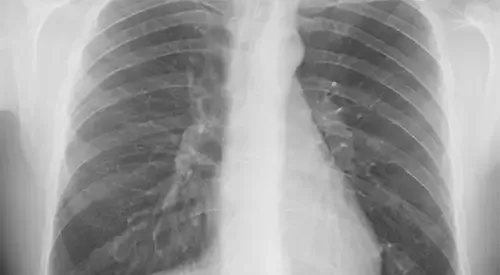Severe Acute Respiratory Syndrome (SARS)
"There is no treatment for SARS, so prevention is very important".
DR. REYES LÓPEZ
SPECIALIST. PEDIATRICS DEPARTMENT

What is SARS?
Severe Acute Respiratory Syndrome (SARS) is an infectious disease of unknown cause that affects the respiratory system causing a flu-like illness in its early stages.
Although it is probably a worldwide disease, it has a special incidence in some regions of Southeast Asia.
Risk groups therefore include healthcare workers who care for these patients, people who live in the same household, or people who have come into contact with respiratory secretions or biological fluids of SARS patients.
The virus also can spread when a person touches a surface or object contaminated with infected respiratory secretions and then touches his or her mouth, nose, or eyes.

What are the symptoms of SARS?
The symptoms and clinical signs are not very specific. Patients present with a fever higher than 38º, sometimes associated with chills, headache, or generalized discomfort.
Some people present mild respiratory symptoms at the beginning of the illness. Between 3 and 7 days later, the patient develops a cough without expectoration, which may progress to respiratory failure, even requiring mechanical ventilation.
Most patients contract pneumonia. The presence of this clinical picture, together with radiological findings compatible with pneumonia or acute respiratory distress, and always with the history of stay in the previous 10 days in a risk area (China, including Hong Kong, Vietnam, Singapore and Toronto) or of contact with a patient presenting the diagnosis, are the data that suggest the diagnosis.
The most common symptoms are:
- Fever.
- Respiratory symptoms.
- Pneumonia.
Do you have any of these symptoms?
You may have severe acute respiratory syndrome
What is the prognosis for SARS?
The disease carries a mortality rate of 3-4%.
Like the flu, there is a very high percentage of patients, which experts place between 85-90%, who experience spontaneous improvement after 6 or 7 days.
Approximately 10% develop serious conditions with respiratory failure.
Who can get SARS?
Most cases have occurred in Southeast Asia. Subsequently, others have been appearing that are distributed throughout the world, affecting North America (Canada) in particular and Europe to a lesser extent.
The contagion has been observed in people who live with or care for these patients, having been in close contact. Risk groups therefore include healthcare personnel who care for these patients, people who live in the same household, or people who have come into contact with respiratory secretions or biological fluids of SARS patients.
The virus also can spread when a person touches a surface or object contaminated with infected respiratory secretions and then touches his or her mouth, nose, or eyes.
How is SARS diagnosed?

The presence of a clinical picture of pneumonia, together with radiological findings compatible with pneumonia or acute respiratory distress, and always with the history of stay in the previous 10 days in a risk area (China, including Hong Kong, Vietnam, Singapore and Toronto) or contact with a patient presenting the diagnosis, are the data that suggest the diagnosis.
A probable case is defined as a suspicious case with the additional finding of pneumonia or respiratory syndrome by chest radiography or autopsy.
With the availability of diagnostic tests for the coronavirus responsible for SARS, WHO added the category of laboratory-confirmed SARS for patients who, while in the probable case category, did not yet have radiological changes but did have a positive test for SARS based on the tests (ELISA, immunofluorescence, or PCR).
How is severe acute respiratory syndrome treated?
As of today, there is no treatment available for this disease. Therefore, the best treatment is prevention.
Reducing contact with someone with SARS decreases the risk of getting the disease. Ways to do this may include reducing travel to places where there is an uncontrollable outbreak of the condition. When possible, avoid direct contact with people with the disease for at least 10 days after fever and other symptoms have gone away.
Hand hygiene is the most important part of preventing SARS.
Cover your mouth and nose when you sneeze or cough. Respiratory secretions should be considered infectious, which means not sharing food, drinks, or utensils.
Where do we treat it?
IN NAVARRA AND MADRID
The Department of Pediatrics
of the Clínica Universidad de Navarra
All our specialists work exclusively and, in addition, since we have all the technology in the same center, we offer the performance of tests and diagnosis in less than 72 hours.
We have a team of highly qualified professionals to attend the different specialized units: Oncopediatrics, Neuropediatrics, Endocrinopediatrics, Neonatology, etc.
Organized in specialized units
- Neonatology Area.
- Pediatric Endocrinology.
- Pediatric Cardiology.
- Pediatric Neuropediatrics.
- Digestive and pediatric nutrition.
- General and preventive pediatrics.
- Pediatric Pneumology.

Why at the Clinica?
- Comprehensive care of the child.
- Professionals who are experts in the different areas for a better diagnosis and treatment.
- Equipped with the latest technology for newborn care.


























